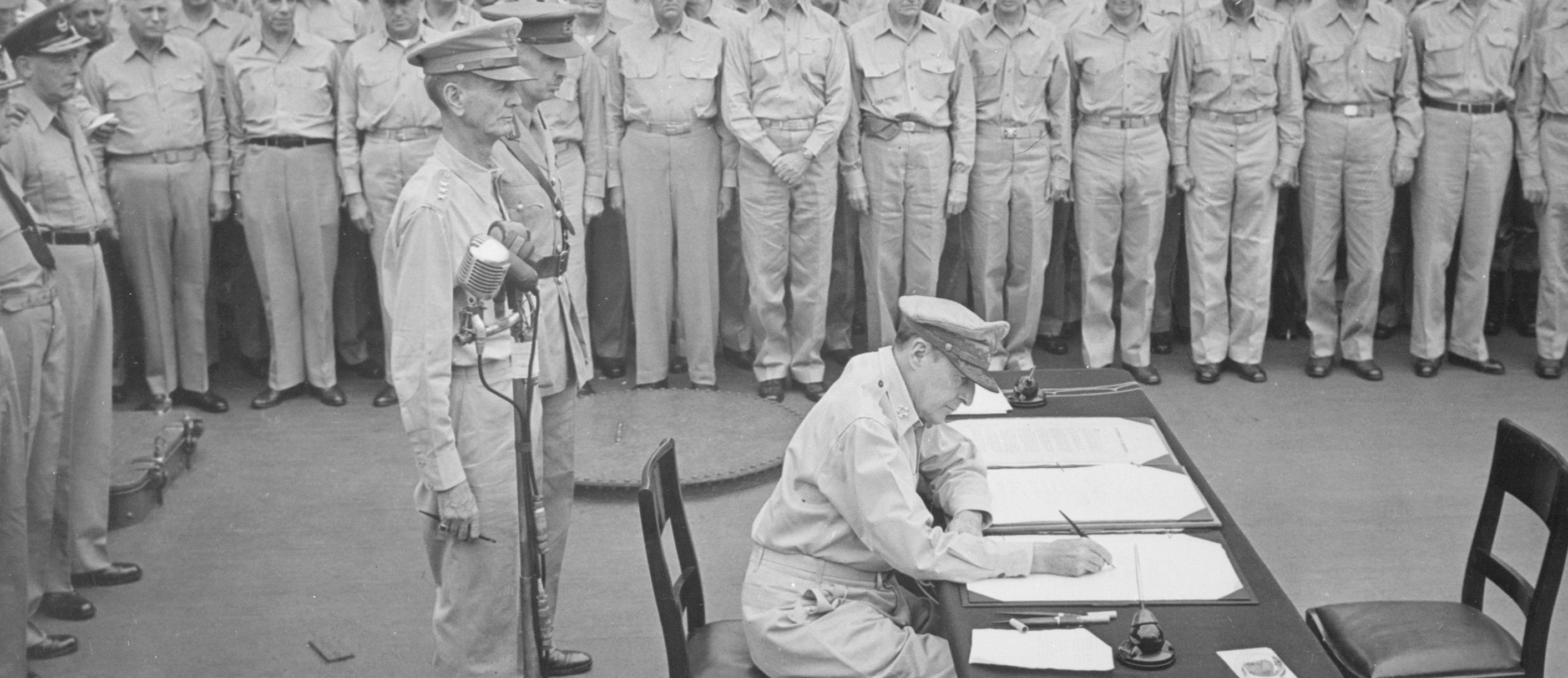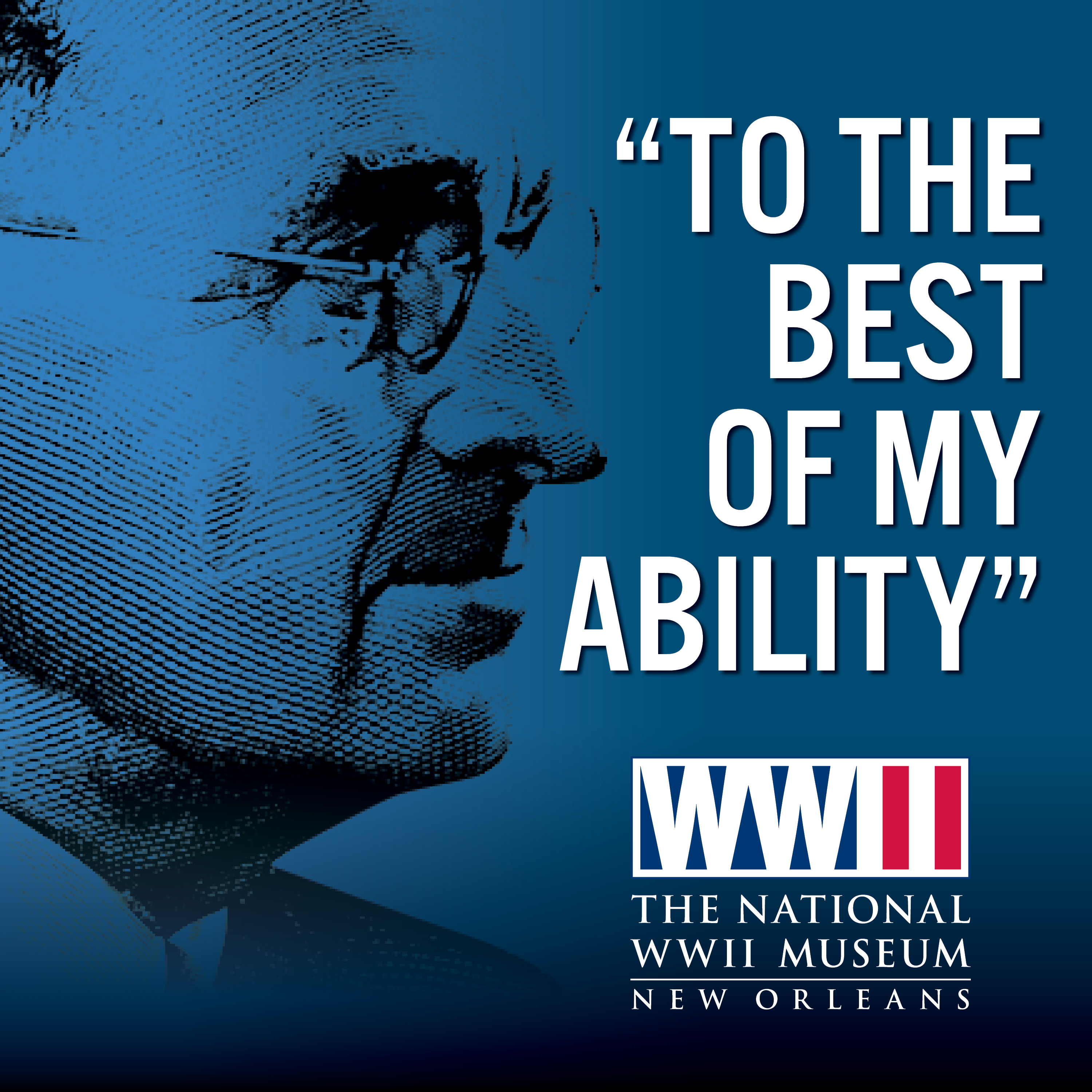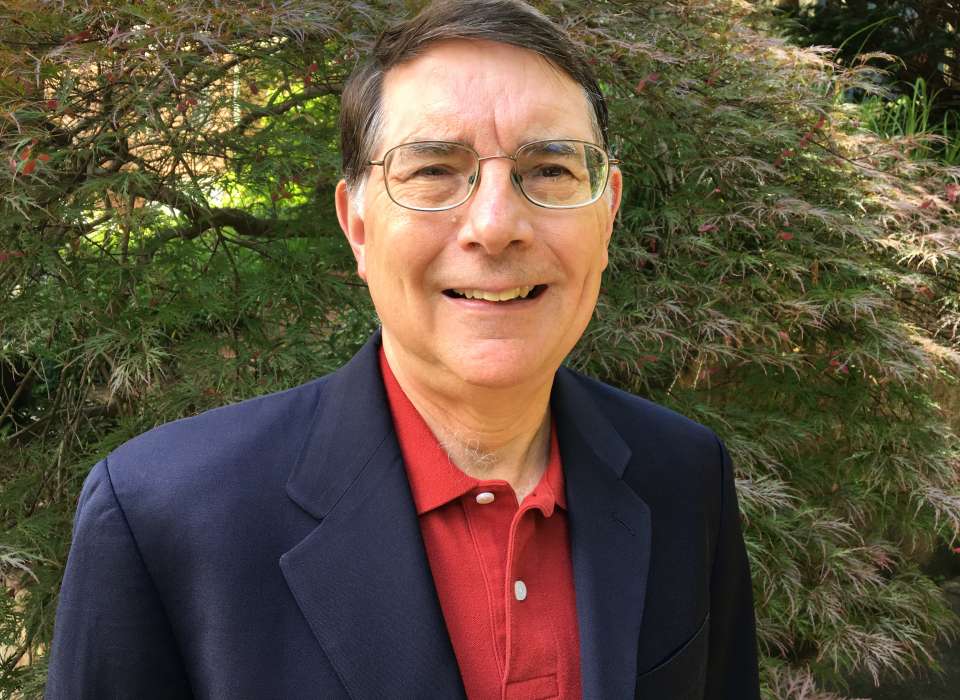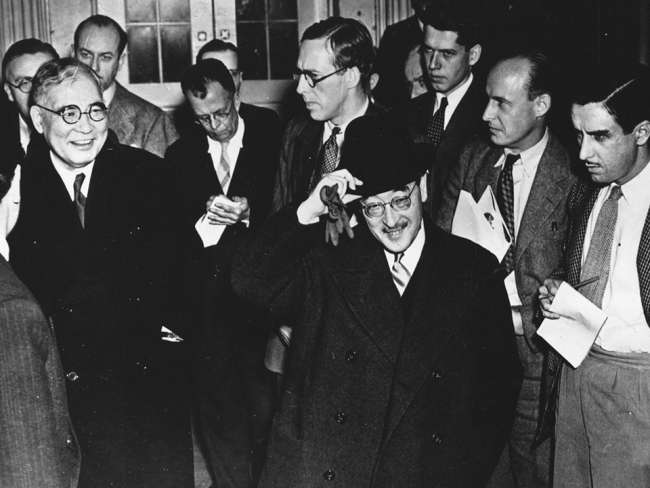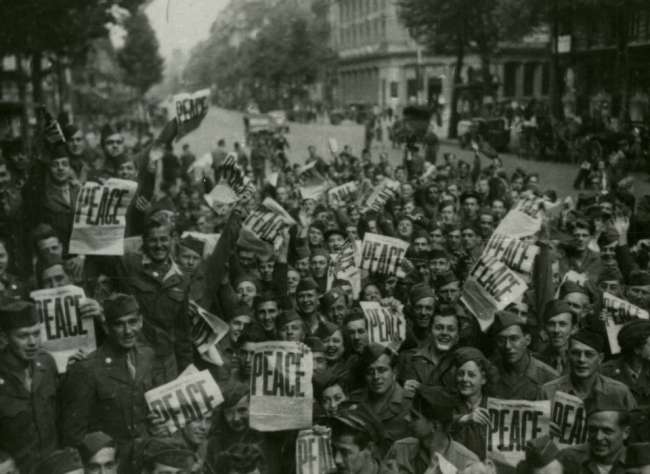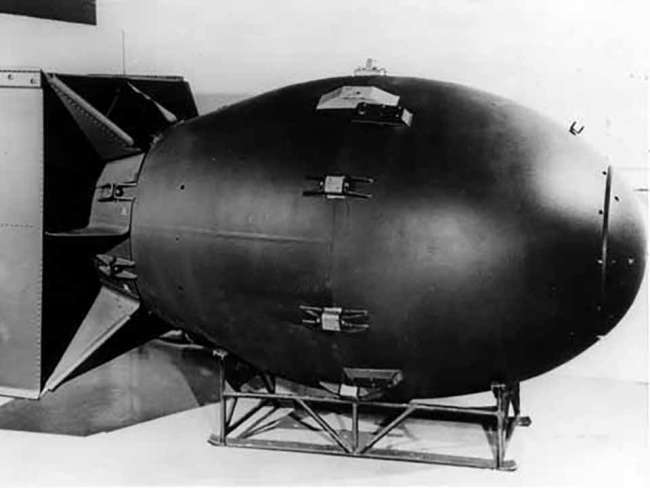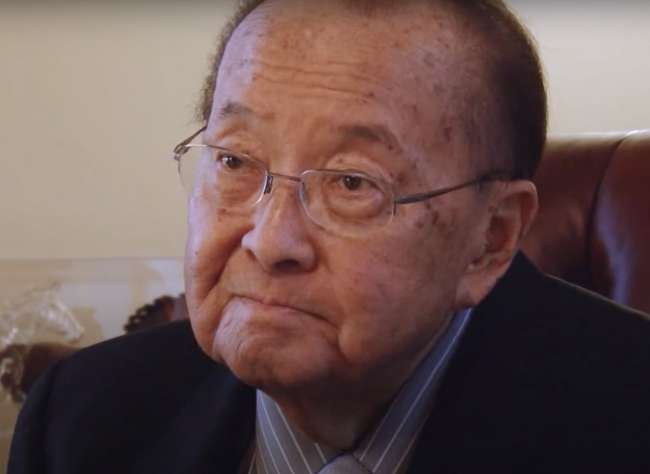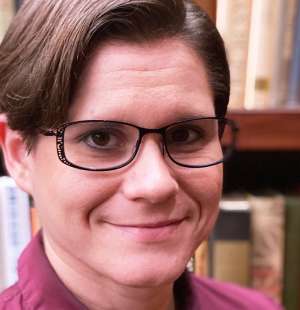Listen: Apple Podcasts, Spotify.
About the Episode
With Japan’s defeat, World War II finally came to an end. The formal end of World War II took place in suitably dramatic fashion, with a surrender ceremony on board the USS Missouri on September 2, 1945. “This is the day we have been waiting for since Pearl Harbor,” said President Truman. “This is the day when Fascism finally dies.” Untested and relatively unknown when he became President just over four months earlier, Truman had proven himself as a leader.
The Allies shifted their focus to rebuilding a decimated Asia. General Douglas MacArthur, who had been named Supreme Allied Commander in the Pacific, immediately went to work assessing what would be needed to ensure that the continent became stable once again, hoping in particular that a stable Japan would mean lasting peace. The greatest issue facing post-war Japan that MacArthur identified was the lack of available food and the high potential of famine-related unrest, with an estimated 10 million Japanese people projected to starve to death in the first year of occupation. Putting pressure on President Truman and ultimately working alongside former President Herbert Hoover, MacArthur created a plan for aid that saved the lives of millions of people not just in Japan, but in China, Vietnam, and other countries across Asia.
This week’s episode, hosted by the Museum’s Dr. Kristen Burton and written by executive producer Gemma R. Birnbaum, features audio from Our Job in Japan, a military training video made just after the war under director Frank Capra and writer Theodor Geisel (better known as Dr. Seuss). Designed as a companion piece to Your Job in Germany, which is featured in episode 3 of this series, Supreme Authority, many felt the film was too sympathetic to the Japanese, and MacArthur moved to suppress its distribution. Ultimately, much like its companion film Your Job in Germany, Our Job in Japan was sold for commercial usage to RKO Pictures and made into the 1947 documentary, Design for Death. Geisel and his wife, Helen Palmer Geisel, co-wrote the screenplay, and though the documentary went on to win several Academy Awards, neither Geisel nor his wife received recognition. Design for Death was met with mixed reviews and was not a commercial success, and nearly all copies are believed to have been destroyed.
Topics Covered in this Episode
- The Japanese surrender aboard the USS Missouri
- The Allied occupation of Japan post-World War II
- Supreme Commander of Allied Forces in the Southwest Pacific Area, General Douglas MacArthur
- MacArthur’s plan to feed starving people across Asia during the occupation
- Our Job in Japan, written by Theodor Geisel under the direction of Frank Capra
Featured Historian
Richard B. Frank
Richard B. Frank is an internationally renowned expert on the Pacific war. After graduating from the University of Missouri, he was commissioned in the US Army, in which he served for nearly four years, including a tour of duty in the Republic of Vietnam as an aero rifle platoon leader with the 101st Airborne Division. Frank completed studies at Georgetown University Law Center in Washington, DC. Soon afterwards he began research on his first book, Guadalcanal: The Definitive Account of the Landmark Battle, which was published in 1990 and won the US Marine Corps’ General Wallace M. Greene Award.
Related Content
-
Article Type
"Pretty Little Phrases": Japanese Diplomacy in 1945
Misguided Japanese diplomacy in 1945 helped to ensure that the war would not have a peaceful end.
-
-
Article Type
The Atomic Bombings
Many Americans greeted the news of the Atomic bombing of Hiroshima with jubilation. Beginning shortly after the war, however, a number of prominent US military leaders began to question the bomb's use.
-
“I Knew My Life had Changed”: Veterans Remember the Pacific War
Beginning on December 7, 1941, lives were changed and uncertainty of the future weighed heavy on every American. Hear the stories of veterans from The National WWII Museum Oral History Collection as they recount their years in the Pacific theater and how they felt once it was finally over.
-
Contributor
Kristen D. Burton, PhD
Kristen D. Burton is the Teacher Programs and Curriculum Specialist at The National WWII Museum in New Orleans, LA.
Sponsors
"To the Best of My Ability" is part of an ongoing series commemorating the 75th Anniversary of the End of World War II made possible by The Nierenberg Family and Bank of America.
Transcript
Archival Audio - President Truman Announces Japanese Surrender
I have received this afternoon a message from the Japanese government in reply to the message forwarded to that government by the secretary of state on August 11. I deem this reply a full acceptance of the Potsdam Declaration, which specifies the unconditional surrender of Japan. In the reply, there is no qualification. Arrangements are now being made for the formal signing of the surrender terms at the earliest possible moment.
General Douglas MacArthur has been appointed the Supreme Allied Commander to receive the Japanese surrender. Great Britain, Russia, and China will be represented by their high ranking officers. Meantime, the Allied armed forces have been ordered to suspend offensive action. The proclamation of V-J Day must await upon the formal signing of the surrender terms by Japan.
Dr. Kristen Burton
In the early hours of August 9, 1945, Japanese Emperor Hirohito met with his supreme war council, the Big Six, in the midst of high tension. A first atomic bomb had fallen on Hiroshima; a second was on the way that very day, to destroy Nagasaki. In between these two attacks, on August 8th, the Soviet Union had declared war on Japan, and in that moment Soviet forces were pouring across the border into Manchuria. The Big Six ferociously debated for hours on whether or not to surrender to the Allies and on what terms, but consensus was difficult. Above all, they were determined to preserve the power and position of their emperor.
Meetings continued over the next few days. Soviet troops overran Manchuria, while Japan braced for further nuclear attacks. The Emperor actually sent his “regalia”—the sacred objects of his ancient dynasty--into hiding to protect them from being destroyed in the bombings. Finally, on August 14, Hirohito intervened in the deliberations of the Big 6, declaring that there was no choice but to surrender. That evening he recorded a message which was broadcast on Japanese radio the next day. The broadcast came as a shock to the Japanese people. The vast majority had never heard his voice before; many could not understand exactly what he was saying since he spoke in a formal, nearly unintelligible dialect. He told them, “The wartime situation has developed,” “not necessarily to Japan’s advantage.” “We must endure the unendurable, suffer the insufferable.” Nowhere in the broadcast did he use the words “surrender” or “defeat.”
But the Pacific War was over. The United States immediately accepted the offer, and celebrations broke out across the country as news of the surrender spread.
Archival Audio - Truman Taking the Oath of Office
“I Harry S. Truman do solemnly swear to faithfully execute the Office of President of the United States, and will to the best of my ability, preserve, protect and defend the Constitution of the United States, so help me God.”
Dr. Kristen Burton
You’re listening to “To the Best of My Ability” from The National WWII Museum in New Orleans, and this is episode 8, “Sign Surrender.” I’m your host, Dr. Kristen Burton.
This week, Japan accepts the terms of the Potsdam Declaration. Officials sign the surrender documents aboard the USS Missouri, and World War II comes to an end.
Archival Audio - US Celebrates Japanese Surrender
Reporters rush out to relay the news to an anxious world and touch off celebrations throughout the country. Washington is jubilant and in Chicago more than a million sing and dance in the streets in the biggest celebration the Windy City has ever seen. Joy is uncontained! It was four o'clock Pacific time in San Francisco when the announcement came and people were quick to leave their offices for an impromptu spontaneous celebration, but it was in that city's Chinatown where Victory Day was the most joyous. Firecrackers that had been hoarded for years are set off in a triumphant roar. See Ethel let loose all the pent-up emotions of three years and eight months of war, and to the victors the spoils! The pose may not be dignified but the young lady is not the least upset. Peace -- it's wonderful.
The Navy photographer gives us a preview of Admiral Halsey's ambition to ride the Emperor's white horse through the streets of Tokyo. Their rallying cry is “go” to an admiral and so say all of us. But the greatest, wildest celebration of all was in New York's Times Square where two million people, by far the greatest in the city's history, filled the streets all day waiting for the official word. A hilarious, happy throng, they cheered every rumor that it was all over and when President Truman's announcement came at 7:00 o'clock, the lid really blew off!
Dr. Kristen Burton
Just after 9am on September 2, two weeks after the United States accepted Japan’s surrender, Japanese and Allied officials gathered aboard the USS Missouri, harbored in Tokyo Bay alongside more than 250 other Allied warships. The ceremony was quick, lasting only 20 minutes. Japanese officials signed first, followed by Supreme Commander Douglas MacArthur, who followed his signing of the declaration with a short statement.
General Douglas MacArthur
It is my earnest hope, and indeed the hope of all mankind, that from this solemn occasion a better world shall emerge out of the blood and carnage of the past. I now invite the representatives of the Emperor of Japan and the Japanese government and the Japanese Imperial general headquarters to sign the instrument of surrender at the places indicated.
Dr. Kristen Burton
Joining us again this week to discuss the occupation and the issues facing postwar Asia is historian and author of the recently released book Tower of Skulls, Richard Frank.
Richard Frank
Well, by the end of the war, about 66 Japanese cities have been hit by conventional and nuclear attack. They’ve been devastated. There were—estimates are usually about 10 million refugees out of a population of about 72 million people. There was an enormous depopulation of urban centers because of the increasingly severe food crisis, which was going to become catastrophically supere—severe in the coming year.
Immediately as the occupation began, a Japanese cabinet minister said that he expected 10 million Japanese to starve to death in the coming year. The transportation system, particularly their shipping, had been destroyed. Japan had been importing about 10% to 20% of its foodstuffs and a large part of its protein came from the fishing industry. That was all gone. So it was—for the average Japanese, it was an extraordinarily grim situation.
There had been a great deal of dissatisfaction that had welled up in the—particularly in the last months of the war as things became increasingly grim and it became obvious that Japan’s situation was really bad, which had been concealed in many ways by propaganda before then. And on top of all this, you have this—even after we formally have the surrender of Japan’s armed forces and even after it appears that there’s not going to be any more conventional fighting, we know that there were, in fact, Japanese officers who were preparing for an insurgency, and they were caching weapons and ammunition all around Japan.
Dr. Kristen Burton
The fear of insurgency was not unfounded. In the hours prior to Hirohito announcing the surrender, a rogue faction led by Major Kenji Hatanaka attempted a military coup d’etat. Seizing control of the Imperial Palace, the rebels attempted to steal master copies of Hirohito’s recording, which were kept in a small safe inside the grand chamberlain’s office, in an attempt to stop the emperor’s broadcast announcing the surrender.
Hatanaka and his team of insurgents managed to disarm palace guards, killing the commander of the Imperial Guard division guarding the palace. They blocked the entrances, severed all means of communication, and held those inside hostage overnight, including Hiroshi Shimomura, who had been present when Hirohito recorded his surrender message.
The insurgents also managed to burn Prime Minister Suzuki’s residence to the ground before the coup was stopped. Rather than be captured or live to see the surrender, Hatanaka shot himself in the head less than an hour before Hirohito’s broadcast, and several of his co-conspirators followed suit. In Hatanaka’s pocket, authorities found a death poem which stated, "I have nothing to regret now that the dark clouds have disappeared from the reign of the Emperor."
Richard Frank
So this—so the black humor aftermath of this is as Japan urbanized after the war, they kept coming across these caches of weapons, ammunition, even a whole tank at one point, that had been stoked away for a possible insurgency like we ran into in Iraq. So it is an extraordinarily perilous moment.
Dr. Kristen Burton
MacArthur had arrived in Tokyo days before the surrender, and even before assessing the full situation across Japan, he put in place three laws. First, Allied personnel were not to eat the Japanese food supply. Second, Allied personnel were not to assault any Japanese people, most of whom were civilian noncombatants. Finally, he severely restricted flying the Rising Sun flag. It wasn’t until after his arrival that MacArthur began to understand just how desperate the situation was across Asia, and how vulnerable the indigenous population was.
Richard Frank
The first thing you have to understand is we—prior to the occupation, we did not fully comprehend how desperate the Japanese food situation was getting. We had intelligence reports that clearly were projecting the Japanese being quite adequately fed for the foreseeable future. We get in, and the Japanese authorities almost immediately began telling us that their food situation is terrible.
In 1945, food—rice crop collapsed. It was a combination of cold weather, rain, a typhoon, and some other measures that were due to the Japanese war effort. It basically collapsed the rice crop from over 10 million metric tons to 6 million metric tons. It was the worst rice crop in 35 years.
And basically, under the way the Japanese operated on what they called a rice year, you harvested—harvested the rice in September, October, and a rice year began the first of November. And it was like hydraulics. I mean, you knew how much rice you had. You knew you had to go for a full year. You do the math. And anyone who did the realistic math by the end of 1945 saw that there is not going to be enough food to keep Japan’s population alive through this period.
So by the end of ’45, although we were originally skeptical, we realized that they were facing famine in the middle of 1946. And the only real solution was to ship US food. And this was the moment when, of the very checkered career of Douglas MacArthur, he had his finest and noblest moment because he got absolutely foursquare behind the idea that the US had to ship food to Japan to keep a massive famine from happening.
Dr. Kristen Burton
Initially, MacArthur’s request for food aid was turned down, and in response, he sent a cable demanding that Truman himself see his requests so that the chain of responsibility was clear. Truman was reluctant to grant aid to Japan at first, but MacArthur was persistent..
Richard Frank
And he would not take no for an answer, because the first answer he got was no because there was worldwide food crisis and the Japanese were not exactly high on most Americans’ list of most deserving. And he kept at it persistently. And he had—and being MacArthur, he had the tremendous effrontery that no one else would have had.
But also, in one of Mr. Truman’s noblest moments and the most important thing he does in terms of the Japanese occupation, he authorizes the food shipments. And we ship to Japan the food, which is critical for the urban population, which is the population at risk. And in July 1946, we’re feeding, with American food, 18 million Japanese. In August, it’s 20 million Japanese, and in September, it’s 15 million Japanese. This is between one in four and one in five Japanese living at that time.
And when it’s all over, the occupation authorities estimate that that food saved 11 million Japanese lives. Now, the total number of Japanese who died in the eight years of the Asian-Pacific War is 3 million. So basically, we saved the lives of almost four times as many Japanese as died in the whole eight years of the war. And this is a story that I think needs to be known and recognized and commemorated and celebrated, which it has not been, in my view.
Dr. Kristen Burton
There were also concerns about instability across the rest of Asia. The war had devastated nearly every nation on the continent, and widespread starvation and lack of resources plagued countries like China and Vietnam that had suffered greatly under Japan’s rule.
Richard Frank
Well, I mean, one of the—one of the major aspects about this is the devastation that was brought throughout Asia by Japan’s war, plus probably the single most devastating thing was the food situation in China—almost everywhere. There’s—these are little—little-noted thing, like for instance, in 1945, there’s this tremendous famine in the northern part of Vietnam. We believe a million, maybe a million and a half Vietnamese starved to death.
It’s sometimes described as the worst year of the 20th century in Vietnam. That’s how bad it was. It’s horrible in what’s now Indonesia. In China, of course, it was devastating. All this was brought on primarily because the Japanese, first of all, insisted their garrisons be fed by the local population, and secondly, because it disrupted all the normal channels for moving food. For instance, Burma, which was a tremendous rice producer, was not available to take care of the Indian famine. So hunger and the disease that accompanied the malnutrition were the predominant characteristics throughout almost all of Asia.
Dr. Kristen Burton
After dealing with the food situation, MacArthur’s next priority was winning over Hirohito, who remained Japan’s reigning monarch during the occupation. In their first meeting on September 27, Hirohito traveled to visit the Supreme Commander at the US Embassy in Tokyo, where he was greeted by MacArthur, who was wearing his standard duty uniform rather than the expected dress uniform. The men met in private for 40 minutes, and while the details of what they discussed largely remain a mystery to this day, the meeting proved to be successful.
After the meeting, MacArthur’s office circulated a photo of the two men, with a towering MacArthur standing beside the emperor. The photo was intended to send a message -- that it was MacArthur and the United States, and not Hirohito, who were in control of Japan.
Over the next 6 years, the Allies continued the arduous task of rebuilding and stabilizing Japan. Finally, in 1951, the Treaty of San Francisco, which was signed by 49 countries, ended hostilities between the Allies and Japan. The Soviet bloc of Poland, Czechoslovakia, and the Soviet Union -- refused to sign, as Cold War tensions continued to escalate. On April 28, 1952, the occupation officially ended and Japan was once again a sovereign nation.
Archival Audio - Our Job in Japan
This is Japan's last war and we are starting to prove that point by completely destroying their power to make war. There'll be no more Japanese war factory. There'll be no more Japanese warlords. No more Japanese warships. No more Japanese warplanes. But that is the easiest part of our job. Getting rid of their war machine is one thing, but it'll take a lot longer to get rid of their idea. This idea has been hammered into these people's heads. The United States Army can't hammer it out - they and only they can do that for themselves. They and only they can think their way out of their stuff. Our job is to see that they do it. Our job is to watch them while they do it, to watch them for tricks, and to smack down any who try to pull tricks. But the honest ones. the sincere ones, the ones who really want to make sense of being given every opportunity, they need at the same time these people these honest ones are looking to us to help them prove that our idea is better than the Japanese idea. These people are going to judge America and all Americans by us. That means we've got another job to do. That job is to be ourselves. By being ourselves we can prove that what we like to call the American Way, or democracy, or just plain old golden rule common sense, is a pretty good way to live.
Dr. Kristen Burton
In our next and final episode of the season, “The Pool of Armed Might,” we’ll meet historian and professor Dr. Marcus Cox, as the end of Lend Lease and the reduction in war production brought to light the stark realities of what a post-war economy means for Americans, particularly for the veterans coming home and facing new realities.
From The National WWII Museum, I’m Dr. Kristen Burton. This episode was written by our executive producer Gemma R. Birnbaum. Media production manager Jeremy Burson did the sound mixing. Archival audio is courtesy of the National Archives and British Pathé.
If you like this podcast, please leave us a review. Reviews are important to help others find the series. "To the Best of My Ability" is part of an ongoing series of programs commemorating the 75th Anniversary of the End of World War II made possible by The Nierenberg Family and Bank of America.
